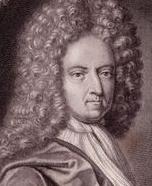The writing style of
Daniel Defoe
Daniel Defoe
1660-1731
English writer, trader, and spy, most famous for his novel 'Robinson Crusoe', which is considered one of the first English novels.
Daniel Defoe, a luminary of early 18th-century literature, is best known for his novel “Robinson Crusoe,” a work that not only marked the beginning of realistic fiction in English literature but also showcased Defoe’s distinctive writing style. His approach to writing is characterized by a direct, factual narrative style, reflecting his background in journalism and pamphleteering. This influence is evident in his concise, straightforward sentences and an unembellished, clear prose that prioritizes clarity and accessibility.
Defoe’s use of the English language was innovative for his time. He often employed a simple yet forceful vocabulary that helped breathe life into the settings and characters of his stories. Unlike his contemporaries who preferred ornate or poetic language, Defoe’s choice of words served the purpose of realism and practicality, aiming to convince the reader of the authenticity of his fictional accounts.
One of the most distinctive features of Defoe’s style is his pioneering use of the novelistic technique known as the “first-person narrative.” This approach allowed him to create a sense of immediacy and intimacy, making the reader feel as though they are receiving a personal account directly from the protagonist. This technique is particularly effective in “Robinson Crusoe,” where the eponymous hero’s journal-like narrative adds to the realism of the novel, blurring the lines between fact and fiction.
Defoe also demonstrated a keen ability to mimic spoken language. His dialogues often capture the idioms and rhythms of natural speech, which was relatively rare in English literature at the time. This skill not only made his characters more relatable but also enriched the narrative with a variety of voices and perspectives.
In constructing his narratives, Defoe frequently utilized a structure that resembled a series of journalistic reports or diary entries. This method helped him to detail his stories with a sense of authenticity and documentary realism, a style that would influence countless writers in the centuries to follow.
